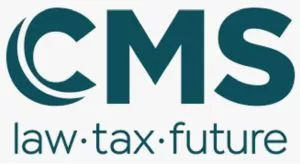A few weeks after the publication of the European Supervisory Authorities' (the “ESAs”) joint opinion on the Sustainable Finance Disclosure Regulation (the “SFDR”)1, the European Securities and Markets Authority (“ESMA”) published, on 24 July 2024, an opinion reflecting its long-term vision on the Sustainable Finance Regulatory Framework (the “Opinion”).
The Opinion provides suggestions, proposals for amendments and insights on the current challenges of the regulatory framework applicable to sustainable finance (the “Framework”). According to ESMA, the Framework aims to ensure that financial systems can support sustainability and the transition, and promote interoperability at EU level.
ESMA sets the context of the Framework as a fast-evolving process, supporting the mobilisation of private capital into sustainable investments, while being aligned with the EU target of climate-neutrality by 2050 and the reduction of greenhouse gas target. The general observation is also that the Framework is ensuring the investors to make effective and aware decisions.
However, the Opinion underlines that ESMA and the national competent authorities are of the view that the Framework could further mature to facilitate investors' access to sustainable investments and improve its usability and coherence throughout the sustainable investment value chain. According to ESMA, the Framework may only be reformed by having a stronger focus on investors (“SIVC”).
1) Focus on customer and industry testing
First, ESMA highlights the importance of customer testing in the policies' process, to seek better-suited solutions for retail investors, while taking into consideration the industry's input to assess the feasibility of potential solutions.
2) The EU Taxonomy as a central point of the Framework
ESMA also confirms that the EU Taxonomy should be the sole reference for the assessment of sustainability to promote convergence and ensure comparability for investors. An extension of the EU Taxonomy is also seen as beneficial, including the reflection around the creation of a ‘social' Taxonomy.
In that respect, the Opinion further clarifies that the definition of “sustainable investments” under Article 2(17) SFDR should be phased out in due course during the evolution process of the EU Taxonomy.
3) The Framework as a means to effectively support the transition
The Opinion underlines that the Framework should be used to effectively support the transition. In that respect, ESMA suggests providing a legal definition of “transition investments” to provide support the creation of transition-related products with legal clarity. In addition, ESMA also highlights the need to provide consistency among transition-related disclosure requirements in EU legal texts, plan disclosures, a broader and more ambitious set of transition benchmarks and high-quality standards for transition bonds and sustainability-linked bonds.
4) Enhanced transparency requirements
ESMA supports key improvements of sustainability-related disclosures, suggesting that all financial products should be subject to minimum reporting requirements, regardless of the sustainability ambition of the product, to enhance transparency and comparability.
In addition, the Opinion explores the possibility to introduce key performance indicators based on consumer testing and covering basic environmental and social sustainability characteristics.
It also confirms the proposal to apply minimum sustainability disclosures to financial instruments under MiFID2 that are not captured by SFDR. ESMA's recommendations also include the provision of simpler information for less informed investors in short consumer-facing documents (similar to a PRIIPS KID).
5) Implementation of a product categorisation system
Confirming the ESAs' opinion on SFDR, ESMA recommends the implementation of a categorisation system, in particular for products offered to retail investors. This system would include two categories:
(i) A sustainable investment category, based on Taxonomy and taking into consideration the ‘Do not significantly Harm' criteria; and
(ii) A transition investment category, oriented towards ‘transition-minded' investors.
The categories should be based on a set of clear eligibility criteria and binding transparent obligations. In addition, ESMA foresees a complementary grading system that would help investors help identify products that are compatible with their sustainability preference and compare them.
The Opinion further insists that, given the importance of marketing materials and product names as a base for investment decision, it is key to ensure the alignment between product names, sustainability profile and marketing materials.
6) ESG data quality
The Opinion underlines the necessity for high-quality ESG data to ensure comparability and reliability, stating that the gap could be filled by the application of the European Sustainability Reporting Standards, under CSRD3. ESMA equally highlights, inter alia, the importance of the European Commission's effort to increase consistency among ESG metrics.
7) Conduct of sustainable investment value chain (the “SIVC”) actors
ESMA is finally urging for more responsibility regarding the conduct of SIVC actors, which should have an active engagement to ensure a proper functioning of the Framework and to fight against greenwashing.
Footnotes
2. Directive 2014/65/EU of the European Parliament and of the Council of 15 May 2014 on markets in financial instruments as amended.
3. Directive 2022/2464 of the European Parliament and of the Council of 14 December 2022
The content of this article is intended to provide a general guide to the subject matter. Specialist advice should be sought about your specific circumstances.




